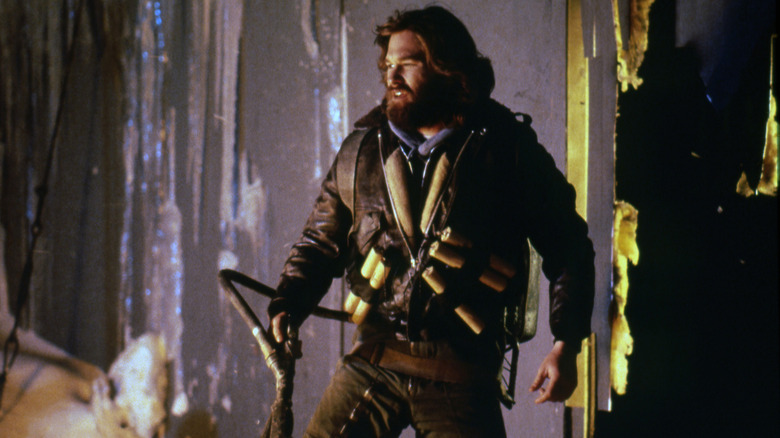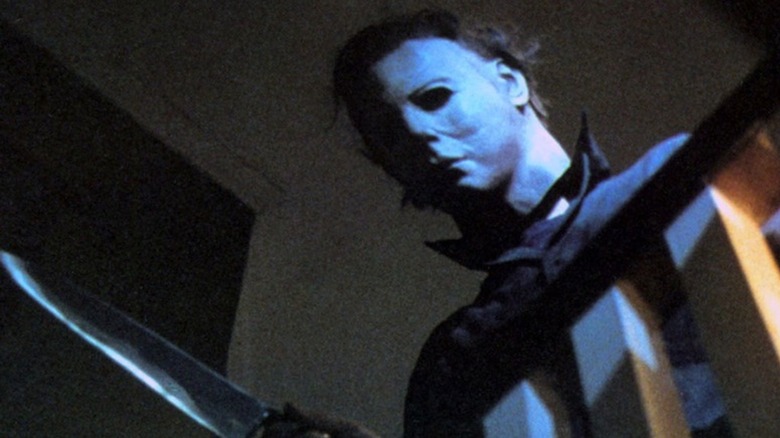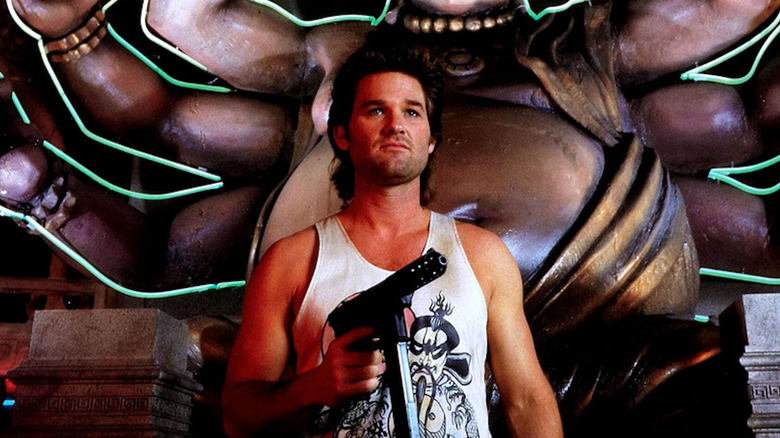Why John Carpenter Doesn't Watch His Own Movies
When John Carpenter was eight years old, he saw Fred M. Wilcox's sci-fi classic "Forbidden Planet" and said to himself, "I'm going to become a movie director. I have to do this." He did it. Boy, did he ever do it.
Over the last 48 years, John Carpenter has made at least six stone-cold masterpieces: "Assault on Precinct 13," "Halloween," "The Thing," "Starman," "Big Trouble in Little China" and "They Live." Very credible m-word cases can be made for "The Fog," "Escape from New York," "Christine," "Prince of Darkness" and "In the Mouth of Madness." These films are lean, mean thrill machines. You've probably watched them multiple times, possibly in the last week.
Ask Carpenter to revisit any of these films, however, and you will get a very firm rejection. As he told Vanity Fair in 2015, "[The movies] start and I think, 'Why did I do that? What was I thinking?'" Not even "Halloween," the film that turned him into a hot Hollywood property, and popularized an entire subgenre of horror (i.e. the slasher film)? Not a freaking chance. "Once they are done, they are out the door and I don't want to think about them anymore."
A master of horror in retrospect
Carpenter has nothing to complain about. He's an internationally renowned auteur (his earliest critical acclaim came from European critics), and one of the very few directors whose movies customarily bear possessory titles on their posters. The man has his own font (Franklin Gothic). He is our greatest living "Master of Horror" (and was 1A at minimum when George A. Romero was still kicking). As a filmmaker, what more could you ask?
A little contemporary respect from the folks charged with identifying and celebrating superior film craftsmanship would've been nice.
"Every movie I've made has had a little dark cloud around it," said Carpenter. He's not being overly sensitive. "Halloween" was a surprise blockbuster that many reviewers – including Andrew Sarris, the dean of 20th century American film criticism — deemed formally significant. But there was always a cudgel to accompany the acclaim. The New Yorker's Pauline Kael backhanded the film over its "dumb scariness," while the Los Angeles Times declared it "well-made but empty." Four years later, when Carpenter knocked out one of the greatest horror movies ever made in "The Thing," The New York Times' Vincent Canby carped that "[I]t aspired to be the quintessential moron movie of the 1980s," while Cinefantastique, a fan publication that should've been firmly in Carpenter's corner, ran a story asking, "Is This the Most Hated Movie of All Time?"
Don't look back
Carpenter's got a right to be leery of critics, and, sad as it sounds, good reason to never look back. With reviews like these on your masterpieces, you can't build a career unless you're always looking forward. And it's not just about the praise or lack thereof. Meryl Streep, arguably the most lauded actor in the history of the medium, proceeds likewise. It's especially difficult for a filmmaker, who, during post-production, watches the movie over and over and over again. It's monotonous. At a certain point, it's no longer a movie. Whatever "magic" you've conjured at various junctures throughout the process has dissipated. It's work, and you're relieved to be done with it. It's absolutely something you want to kick out the door.
Look at it through the creator's lens, and it's a miracle any director wants to spend another two hours in the dark with one of their films, even with an adoring audience. Those that do have a tendency to rework their perfectly perfect movies to death (trust me, Michael Mann, you got it right the first time on every movie you've ever made, especially "The Last of the Mohicans"). So while Carpenter's maintaining his sanity as a (now retired) filmmaker, he's also doing us a favor. You can't recut what you don't rewatch.


